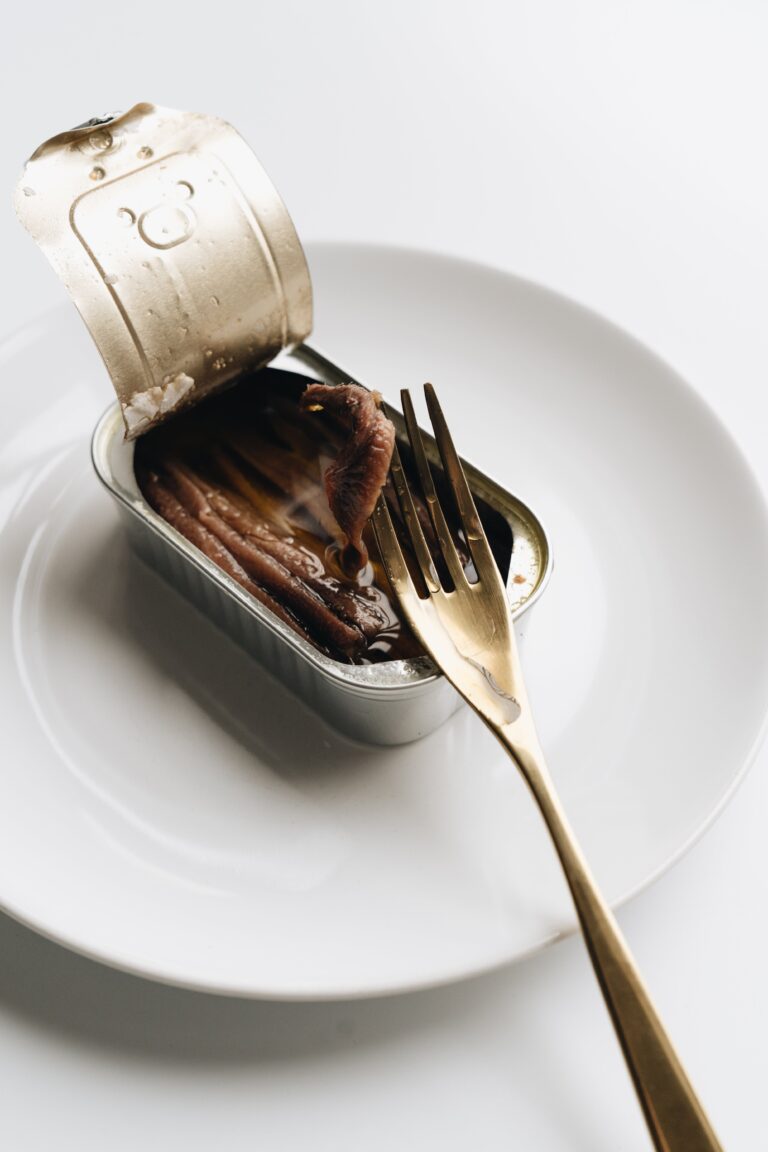
If you’re wondering whether you can freeze salami, the answer is yes! Freezing salami is a great way to extend its shelf life and keep it fresh for longer. In this blog post, we’ll cover everything you need to know about freezing salami slices. Including how to freeze and defrost frozen salami, how long salami lasts in the freezer, and how to maintain the texture and flavour of the salami.
What Is Salami?
Salami is a type of cured sausage that originated in Italy. It is typically made from a mixture of ground meat (usually beef or pork, but sometimes game or poultry), fat, salt, and various spices and herbs, which are stuffed into a casing and left to dry and cure. The specific ingredients and flavourings used can vary depending on the type of salami and the region where it is produced. Salami is often served as a cold cut or appetizer, sliced thinly and paired with cheese, crackers, or bread. It is also commonly used as a pizza topping or in pasta dishes.
How is Salami Made?
The process of making salami involves fermentation and air drying. After stuffing the seasoned meat into casings, the sausages are left to ferment for a certain period. During fermentation, beneficial bacteria in the meat convert the sugars into lactic acid, which helps preserve the sausages and contributes to their unique flavour. Following fermentation, the salami is hung in a cool, dry environment to air dry for several weeks or even months. This drying process further intensifies the flavours and creates a firm texture.
What are the Different Types of Salami?
There are numerous regional variations of salami in Italy, each with its own distinctive characteristics. Some popular types include Genoa salami, which is seasoned with garlic and red wine; Milano salami, which is known for its mild flavour and finely ground texture; and Calabrese salami, which is spicy due to the addition of hot peppers. Outside of Italy, salami has gained popularity worldwide, and different countries have developed their own variations using local ingredients and flavour profiles.
How Do You Use Salami?
Salami is often enjoyed sliced thin and served as part of a charcuterie board or antipasto platter. It can also be used as a topping on pizzas, sandwiches, or salads, adding a savoury and robust flavour. Its versatility makes it a favourite ingredient in many dishes, both as a standalone item and as an ingredient that enhances the taste of various recipes.

How Long Does Salami Last?
It’s important to note that salami is a cured and fermented product, which means it has a longer shelf life than fresh meats. However, it should still be stored properly in the refrigerator and consumed within a reasonable time frame. When purchasing salami, it’s advisable to choose high-quality products from reputable sources to ensure the best flavour and safety.
How long can salami sit out?
When salami is left unrefrigerated, it should be consumed within a specific time frame to ensure its quality and safety. Generally, salami can sit out at room temperature for up to 2 hours. During this time, it is still considered safe to eat. However, after 2 hours, the risk of bacterial growth increases significantly, and it is advisable to refrigerate or discard the salami to prevent foodborne illnesses.
Factors such as temperature, humidity, and the specific conditions in which the salami is kept can affect its shelf life at room temperature. If the environment is particularly warm or humid, the time frame for leaving salami out may be shorter. It’s always best to err on the side of caution and prioritize food safety.
How long can you keep salami in the refrigerator?
In general, whole, unopened salami that is properly sealed and refrigerated can last for several weeks. It’s best to check the product packaging for any specific instructions or expiration dates provided by the manufacturer. Following those guidelines will ensure the best quality and safety.
Once the salami is opened or sliced, it is recommended to consume it within a shorter timeframe. Typically, opened salami can be kept in the refrigerator for about 1 to 2 weeks. To maintain its freshness, it’s crucial to store the salami properly.
Tips for storing salami in the refrigerator
- Packaging: If the salami is sold in a vacuum-sealed package, it’s advisable to keep it in its original packaging until ready to use. This helps preserve its flavour and prevents it from drying out.
- Wrapping: If the salami is not vacuum-sealed or has been opened, tightly wrap it in plastic wrap or aluminum foil. Ensure there are no air pockets to minimize exposure to air, which can cause the salami to dry out or absorb unwanted odours.
- Container: Alternatively, you can place the salami in an airtight container or a resealable plastic bag. This can help further protect it from moisture and odours in the refrigerator.
- Temperature: Keep the salami in the coldest part of the refrigerator, such as the meat drawer or the lower shelf. The temperature should be consistently maintained between 32°F (0°C) and 40°F (4°C) to slow down bacterial growth and preserve the quality of the salami.
Remember to regularly check the salami for any signs of spoilage, such as mold, unpleasant odours, or an unusual texture. If you notice any of these signs, it’s best to discard the salami to avoid the risk of foodborne illnesses.

What are the Benefits of Freezing Salami?
- Extended Shelf Life: By freezing salami, you can significantly extend its shelf life. While salami typically has a decent shelf life in the refrigerator, freezing it can keep it fresh for several months, allowing you to enjoy it at your convenience.
- Cost-effective: Buying salami in bulk or taking advantage of special deals becomes feasible when you have the option to freeze it. This helps you save money in the long run while still enjoying your favourite salami varieties.
- Versatility: Frozen salami can be used in a multitude of dishes. From pasta sauces and omelets to salads and sandwiches, the possibilities are endless. Having frozen salami readily available allows you to enhance the flavours of your meals with minimal effort.
How to Freeze Salami
Here are some key tips to consider when freezing salami:
- Preparation: Before freezing, ensure your salami is properly sealed. Wrap it tightly in plastic wrap or aluminum foil, making sure there are no air pockets. Alternatively, you can use airtight freezer bags or containers to protect the salami from freezer burn and maintain its flavour.
- Slicing: If you have a large salami, it’s wise to slice it before freezing. Sliced salami is easier to thaw and use, allowing you to take out smaller portions as needed. Additionally, it reduces the risk of moisture loss during the thawing process.
- Portioning: Divide the salami into smaller portions before freezing. This way, you can defrost only what you need, reducing the chances of waste. Consider freezing the salami in individual servings or amounts suitable for your favourite recipes.
- Labelling: Don’t forget to label your frozen salami with the date of freezing. This ensures you keep track of how long it has been stored in the freezer and helps you maintain freshness.
How Long Can You Freeze Salami For?
When stored properly in the freezer, in general, salami can be frozen for up to 2 to 3 months while maintaining its taste and texture. After this time, while it may still be safe to consume, the quality may deteriorate, resulting in changes in taste and texture. To maximize the shelf life of frozen salami, it’s best to consume it within this time frame.
How Do You Defrost Salami?
To defrost salami properly and safely, there are a few methods you can use. Here are three recommended methods for thawing salami:
- Refrigerator Thawing: This is the best method for thawing salami while maintaining its quality. Follow these steps:
- Take the frozen salami out of the freezer.
- Place the wrapped salami in the refrigerator.
- Allow it to thaw slowly and evenly. Thawing time will depend on the thickness of the salami slices or the size of the portion.
- It’s advisable to place the salami on a plate or in a container to catch any potential drips as it thaws.
- Once fully thawed, the salami is ready to be used. Consume it within a few days for optimal taste and quality.
- Cold Water Thawing: If you need to thaw the salami more quickly, you can use the cold water thawing method. Follow these steps:
- Ensure the salami is tightly sealed in a plastic bag to prevent water from seeping in.
- Fill a large bowl or sink with cold water.
- Submerge the sealed salami in the water.
- Change the water every 30 minutes to maintain a cold temperature.
- Thawing time will vary depending on the size and thickness of the salami. As a general guideline, it may take about 1 to 2 hours.
- Once thawed, use the salami immediately or refrigerate and consume it within a few days.
- Microwave Thawing (for small portions): If you’re in a hurry and need to thaw a small portion of salami, you can use the microwave. However, note that this method can affect the texture and flavour of the salami. Follow these steps:
- Remove the salami from any packaging or wrapping.
- Place the salami on a microwave-safe plate.
- Set the microwave to the defrost or low-power setting.
- Microwave in short intervals (e.g., 30 seconds) to prevent cooking or overheating the salami.
- Check the salami regularly, flipping it over if necessary.
- Once partially thawed, remove it from the microwave and allow it to finish thawing at room temperature or continue with immediate use.
Regardless of the method you choose, it’s important to avoid thawing salami at room temperature or in warm water, as this can promote bacterial growth and compromise food safety.

Can You Refreeze Salami
It is generally not recommended to refreeze salami once it has been thawed. Freezing and thawing can affect the texture and quality of the salami, and refreezing it can further compromise its taste and texture.
When you freeze and then thaw salami, moisture is released, and the salami’s structure may change. Refreezing can cause additional moisture loss and potential degradation in flavour and texture. It also increases the risk of bacterial growth and foodborne illnesses.
How To Tell If Your Frozen Salami Is Bad
When assessing whether frozen salami has gone bad, it’s important to rely on your senses and look for certain signs of spoilage. Here are some indicators that your frozen salami may no longer be safe to consume:
- Visual inspection: Thawed salami should appear relatively similar to its original state before freezing. Look for any visible signs of mold, discoloration, or an unusual slimy or sticky texture on the surface. If you notice any of these visual changes, it is best to discard the salami.
- Odour: Take a sniff of the thawed salami. Fresh salami typically has a distinct, pleasant aroma. If you detect any off or sour odours, an ammonia-like smell, or any other unpleasant or foul smells, it is an indication that the salami has spoiled and should not be consumed.
- Texture: Pay attention to the texture of the thawed salami. If it feels excessively slimy, mushy, or has a significant change in texture compared to its original state, it is a possible sign of spoilage. Salami should generally have a firm and slightly dry texture.
If you observe any of these signs, it is strongly advised not to consume the salami, as it may pose a risk to your health. Bacterial growth and the development of toxins can occur in spoiled meat, leading to foodborne illnesses.
What To Do With Frozen Salami
Frozen salami can be used in a variety of dishes once it has been defrosted. Here are some ideas for what to do with frozen salami:
- Use it in a sandwich: Defrosted salami slices can be a great addition to sandwiches, such as Italian-style subs or paninis. Just like this Easy Salami Sandwich from Simply Delicious!
- Add it to pizza: Sliced salami can be a delicious topping for homemade or store-bought pizzas.
- Use it in pasta dishes: Salami can add a savoury flavour to pasta dishes, such as spaghetti carbonara or pasta with tomato sauce.
- Omelettes and Frittatas: Incorporate thawed salami into your breakfast or brunch dishes by including it in omelettes or frittatas. The rich flavours of the salami complement eggs, cheese, and various vegetables. Create a flavorful combination by adding spring onions, bell peppers, spinach, and shredded cheese to your egg mixture.
- Make a charcuterie board: Sliced defrosted salami can be an excellent addition to a charcuterie board, paired with other cured meats, cheese (like brie, burrata and gorgonzola/blue cheese), fruit, and nuts.
- Pasta Sauces and Stews: Finely chop or crumble thawed salami and add it to pasta sauces or stews for an extra depth of flavour. It can enhance the taste of tomato-based sauces, meaty ragùs, or hearty bean stews. Would be even a perfect addition to a hearty White Bean Soup!
- Eat it as a snack: Defrosted salami slices can be a quick and easy snack, paired with cheese or crackers.
When using frozen salami, be sure to defrost it properly in the refrigerator and consume it within a few days. Avoid refreezing defrosted salami, as this can compromise its texture and quality.
Other Groceries You Can Freeze
Here are other groceries you can easily freeze in order to extend shelf life and save money. Check out these posts for directions and what you should know before freezing them!

Christopher is a food and lifestyle expert, recipe developer and the content creator behind May Eighty Five. With years of experience in the kitchen, he also shares tips, tricks and how to’s that he has learnt over the years. Every week, he shares quick, simple and mostly healthy recipes along with some home and entertaining tips. You will find flavorful cocktails, delicious appetizers, tasty mains and some indulgent desserts. As a home decor enthusiast, he also likes to share simple DIY projects and simple tips for a beautiful home.








9 Comments